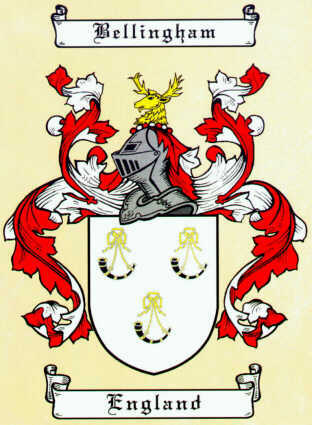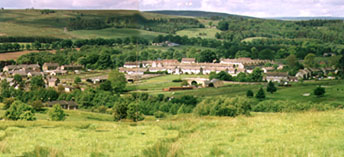BORDER VILLAGES
bELLINGHAM
Pronounced Bellin-jam

Bellingham is a fascinating village and is an ideal centre for exploring the historically rich countryside around.
Owing to its position reiver activity was intense over a long period, the visible evidence of which can still be seen in the form of fortified buildings which clutter the area.
Much of the history of the region has fortunately been recorded and there are so many stories featuring the wide variety of characters who lived there in their time.
Sir John Fenwick, Warden of the English Middle March, had the unenviable task of trying it to keep the peace in Northumberland. In an attempt to control the unruly elements he had occupied Bellingham Castle with 80 men. To the Charltons, who resided in the next valley, Fenwick represented the law and so was a fair target. With help from their mates and, surprisingly, the Croziers from over the Border, they gathered together a good sized posse and launched an attack upon the castle and succeeded in driving out Fenwick with his men.
Next year, 1525, Fenwick returned with an even larger force and the Charltons countered with an even larger body of men having recruited all the disaffected and unruly reprobates from a wide area round about.
They succeeded in setting fire to the castle and it appeared that the Charltons had won round two but, seven years later, William Charlton with two members of his family, were spotted in Colwell, by the Lord Warden's men. Taken by surprise the outlaws were easily caught and were hanged from the nearest tree.
Scottish reivers from Liddesdale could easily make their way across the watershed into the North Tyne valley where Bellingham is situated. It was necessary for the inhabitants to erect defences to protect themselves and their properties indicated by the remains of clusters of bastles, towers and castles in the region.
The inhabitants were constantly being harried by the Armstrongs, Croziers, Elliots and their companions. They were often visited by Scots reivers who entered England by way of Carter Bar, to the north.
One day, in 1597, while the people of Bellingham were enjoying their annual fair, the villagers were suddenly set upon by 300 mounted raiders intent on stealing their stock and causing as much damage and misery as they could. Taken unawares the inhabitants could do little to fend off the attack and were unable to prevent their farms and fields being cleaned out. Nor were they in a position to follow the raiders to recover their animals. By the time they had recovered from the shock and assembled a fighting force, the raiders and their spoils were well away.
This particular raid was led by the notorious freebooter Auld Watt of Harden, an ancestor of the Sir Walter Scott. He and his men had travelled a long way from his base near Hawick. Fortunately, raids on this scale were not common but lesser raids were all too frequent.
Auld Watt did not have it all his own way. On one humiliating occasion the fearless Charltons captured his sword and it is to this day held by the Charltons at Helsleyside near Bellingham.
Many local bastles and towers were destroyed or fell into decay but a few have survived the ravages of time even though some may now be little more that a heap of stones. The sites retain the presence of past glory and many are worth a visit. Some original buildings are well preserved and have been converted into comfortable homes and others are still in use as farm buildings.

Village